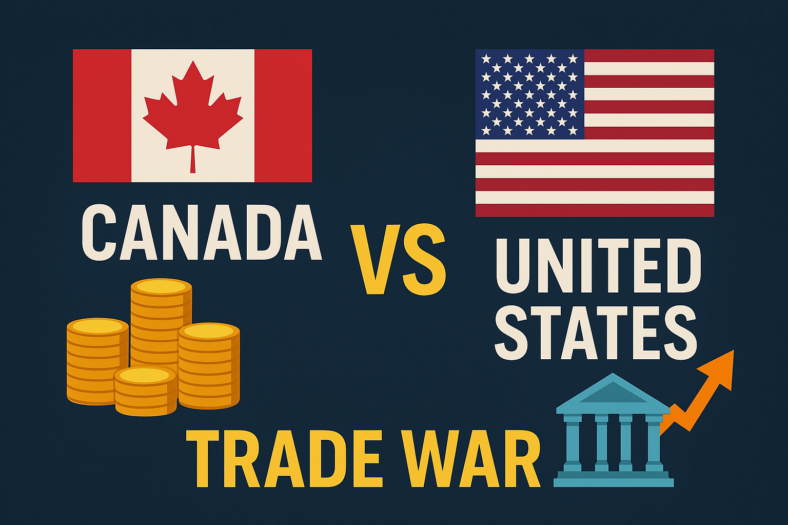When it comes to securing your financial future, one of the most reliable and low-risk investment options available in Canada is the Guaranteed Investment Certificate (GIC). GICs offer a secure way to invest your money with a fixed interest rate over a predetermined period, providing stability and peace of mind for investors. Among the various types of GICs, the 1-year GIC stands out as a popular choice for those seeking short-term investment opportunities with competitive returns.
In this comprehensive guide, we delve into the realm of 1-year GIC rates in Canada, exploring the best options available to investors looking to maximize their returns while minimizing risk. Whether you’re a seasoned investor or someone just beginning to explore the world of financial planning, understanding the landscape of 1-year GIC rates is essential for making informed investment decisions.
Throughout this guide, we will examine the factors that influence 1-year GIC rates, compare rates offered by different financial institutions, and provide valuable insights into how to choose the best 1-year GIC to suit your financial goals and risk tolerance. By the end of this guide, you’ll be equipped with the knowledge and tools necessary to navigate the Canadian GIC market confidently and make sound investment choices that align with your objectives.
Join us as we embark on a journey through the world of 1-year GIC rates in Canada, where financial stability meets lucrative investment opportunities. Let’s dive in!
Best 1-year GIC rates – Our Top Picks
1-year Guaranteed Investment Certificates (GICs) are financial products offered by banks, credit unions, and other financial institutions in Canada. They are a type of fixed-income investment where you agree to lend a sum of money to the institution for a period of one year, in exchange for a guaranteed return on your investment.
Here’s how 1-year GICs typically work:
Investment Term: As the name suggests, 1-year GICs have a fixed term of one year. This means that your investment remains locked in for the duration of the term, and you cannot access your funds until the maturity date without incurring penalties.
Fixed Interest Rate: One of the key features of 1-year GICs is the fixed interest rate. When you purchase a 1-year GIC, the financial institution guarantees a specific rate of return on your investment for the entire duration of the term. This rate is usually higher than what you would earn in a regular savings account but lower than other investment options that carry more risk.
Guaranteed Principal: Another important aspect of 1-year GICs is the guarantee of the principal amount. This means that regardless of fluctuations in the market or changes in interest rates, you are guaranteed to receive back the initial amount you invested at the end of the term.
Interest Payment Options: Depending on the terms of the GIC, interest payments can be made periodically (e.g., monthly, quarterly, semi-annually) or compounded and paid out at maturity along with the principal amount.
Early Redemption: While 1-year GICs are designed to be held until maturity, some institutions may offer the option to redeem the GIC early, albeit with a penalty fee. This penalty is typically a reduction in the interest earned on the investment.
Security: 1-year GICs are considered low-risk investments because they are typically issued by government-regulated financial institutions, and the principal amount is protected up to certain limits by deposit insurance programs such as the Canada Deposit Insurance Corporation (CDIC) or provincial deposit insurance corporations.
Overall, 1-year GICs provide investors with a stable and predictable way to earn a fixed return on their investment over a short time horizon, making them a popular choice for those seeking to preserve capital while generating income.
How do 1-year GICs work?
1-year Guaranteed Investment Certificates (GICs) function as fixed-term investments offered by financial institutions such as banks, credit unions, and trust companies. Here’s a detailed breakdown of how they work:
Initial Investment: To purchase a 1-year GIC, you start by depositing a specific amount of money with the financial institution offering the GIC. This initial investment amount can vary depending on the institution and the specific GIC product.
Fixed Term: Once you’ve invested in a 1-year GIC, your money is locked in for a predetermined period of one year. During this time, you cannot access your funds without incurring penalties, except in certain circumstances where early redemption options may be available (usually at a cost).
Fixed Interest Rate: One of the defining features of a 1-year GIC is the fixed interest rate that is agreed upon at the time of purchase. This interest rate remains constant throughout the term of the GIC, regardless of any fluctuations in the broader economy or financial markets.
Interest Payments: Depending on the terms of the GIC, interest payments can be structured in different ways:
- Simple Interest: Some GICs pay out interest periodically (e.g., monthly, quarterly, semi-annually) to the investor.
- Compound Interest: Others may compound the interest, meaning it is added to the principal amount and earns interest itself. In this case, the total amount (principal plus interest) is paid out at maturity.
Maturity: At the end of the one-year term, the GIC reaches maturity. This is when the principal amount, along with any accrued interest, is paid out to the investor. If the GIC is set to compound interest, you receive the full amount (principal plus interest) at maturity.
Risk and Security: 1-year GICs are generally considered low-risk investments because they are typically issued by federally regulated financial institutions. Additionally, deposits made into GICs are often protected by deposit insurance programs, such as the Canada Deposit Insurance Corporation (CDIC) or provincial deposit insurance corporations, up to certain limits.
Renewal or Redemption: After maturity, you have several options:
- Renewal: You can choose to renew the GIC for another term, often at a new interest rate.
- Redemption: You can cash out the GIC and receive your principal plus interest. If you choose to redeem before maturity, you may incur penalties or forfeit some of the interest earned.
Overall, 1-year GICs provide investors with a secure way to earn a predictable return on their investment over a short time frame, making them a popular choice for individuals seeking stability and capital preservation.
Pros and cons of 1-year GICs
Pros of 1-year GICs:
Stability: 1-year GICs offer a stable and predictable return on investment, with a fixed interest rate for the duration of the term. This stability can provide peace of mind to investors, especially during times of economic uncertainty.
Low Risk: Compared to other investment options like stocks or mutual funds, 1-year GICs are relatively low-risk. The principal amount is typically guaranteed, and deposits are often protected by deposit insurance programs, reducing the risk of loss.
Guaranteed Return: When you invest in a 1-year GIC, you know exactly how much interest you will earn over the term. This guaranteed return can be attractive for investors who prioritize capital preservation and prefer a predictable income stream.
Short-Term Commitment: With a term of only one year, 1-year GICs offer investors flexibility and liquidity compared to longer-term investments. This short-term commitment can be beneficial for individuals who may need access to their funds in the near future.
Diversification: Including 1-year GICs in your investment portfolio can help diversify your holdings and balance out risk. By allocating a portion of your portfolio to low-risk assets like GICs, you can reduce overall volatility and improve long-term stability.
Cons of 1-year GICs:
Lower Returns: While 1-year GICs provide a guaranteed return, the interest rates are typically lower compared to other investment options with higher risk levels. This means that investors may miss out on potential higher returns available in the market.
Lack of Flexibility: Once you invest in a 1-year GIC, your money is locked in for the entire term. If you need access to your funds before maturity, you may incur penalties or forfeit some of the interest earned, reducing the overall return on investment.
Inflation Risk: Inflation can erode the purchasing power of your money over time. Since 1-year GICs offer fixed returns, there is a risk that the interest earned may not keep pace with inflation, resulting in a decrease in real purchasing power.
Opportunity Cost: By committing funds to a 1-year GIC, investors may miss out on opportunities to invest in higher-yielding assets or take advantage of market fluctuations. This opportunity cost could impact overall portfolio performance in the long run.
Interest Rate Risk: If interest rates rise after you’ve invested in a 1-year GIC, you may miss out on the opportunity to earn higher returns on future investments. Conversely, if interest rates fall, your fixed-rate GIC may become less attractive compared to other investment options.
In summary, while 1-year GICs offer stability and security, they also come with limitations such as lower returns and lack of flexibility. It’s essential for investors to weigh these pros and cons carefully and consider their financial goals and risk tolerance before investing in 1-year GICs.
Types of 1-year GICs available in Canada
In Canada, there are several types of 1-year Guaranteed Investment Certificates (GICs) available to investors, each with its own features and benefits. Here are some common types:
Fixed Rate GICs: These are the most traditional type of GICs, offering a fixed interest rate for the entire one-year term. The interest rate is determined at the time of purchase and remains constant regardless of fluctuations in the economy or financial markets.
Variable Rate GICs: Unlike fixed rate GICs, the interest rate on variable rate GICs may change periodically throughout the term based on fluctuations in market interest rates. This type of GIC typically offers the potential for higher returns but also comes with increased risk as the interest rate is not guaranteed to remain stable.
Cashable GICs: Cashable GICs provide investors with the flexibility to redeem their investment before maturity without incurring penalties. While this type of GIC may offer lower interest rates compared to non-cashable options, it provides liquidity and accessibility for investors who may need to access their funds unexpectedly.
Escalating Rate GICs: Escalating rate GICs offer a unique feature where the interest rate increases over the term of the investment. This type of GIC typically starts with a lower interest rate that gradually rises each year, providing investors with the potential for higher returns over time.
Market-Linked GICs: Market-linked GICs offer returns tied to the performance of underlying financial assets, such as stock market indexes or a basket of stocks. While these GICs may offer the potential for higher returns, they also come with greater risk as the returns are linked to market performance.
Foreign Currency GICs: Some financial institutions offer 1-year GICs denominated in foreign currencies, allowing investors to diversify their holdings and potentially benefit from currency fluctuations. However, investing in foreign currency GICs carries additional risk due to exchange rate fluctuations.
Registered GICs: Registered GICs, such as Registered Retirement Savings Plan (RRSP) or Tax-Free Savings Account (TFSA) GICs, offer tax advantages for investors. Contributions made to these accounts may be tax-deductible (in the case of RRSPs) or tax-free (in the case of TFSAs), making them popular options for long-term savings and retirement planning.
These are just a few examples of the types of 1-year GICs available in Canada. It’s essential for investors to carefully consider their financial goals, risk tolerance, and liquidity needs when choosing the right type of GIC for their investment portfolio. Additionally, comparing the terms, interest rates, and features offered by different financial institutions can help investors make informed decisions and maximize their returns.
How to find the best 1-year GIC rates in Canada
Finding the best 1-year Guaranteed Investment Certificate (GIC) rates in Canada requires thorough research and comparison. Here’s a step-by-step guide to help you find the top rates:
Research Financial Institutions: Start by researching various financial institutions that offer 1-year GICs in Canada. This includes banks, credit unions, online banks, and other financial institutions. Look for reputable institutions with a solid track record and positive customer reviews.
Check Online Comparison Tools: Many websites and financial portals offer comparison tools that allow you to compare GIC rates from different financial institutions side by side. Use these tools to quickly identify institutions offering competitive rates for 1-year GICs.
Visit Bank Websites: Visit the websites of individual banks and financial institutions to review their current GIC offerings. Look for dedicated sections or pages that provide information on GIC rates, terms, and features. Note down the rates offered for 1-year GICs by each institution.
Contact Financial Institutions: If you can’t find the information you need online or if you have specific questions about GIC rates and terms, don’t hesitate to contact the financial institutions directly. Reach out to their customer service representatives via phone, email, or live chat to inquire about their current 1-year GIC rates and any promotional offers.
Compare Rates and Terms: Once you have gathered information from multiple financial institutions, compare the rates and terms of their 1-year GICs. Pay attention to factors such as the interest rate, compounding frequency, minimum investment requirements, and any special features or benefits offered.
Consider Promotional Offers: Some financial institutions may run promotional campaigns offering higher-than-usual rates on their GICs for a limited time. Keep an eye out for any special promotions or offers that could potentially provide better returns on your investment.
Review Fine Print: Before making a decision, carefully review the fine print of each GIC offering, including the terms and conditions, maturity date, early redemption penalties, and deposit insurance coverage. Make sure you fully understand all the terms associated with the GIC before committing to an investment.
Factor in Deposit Insurance: Consider the deposit insurance coverage provided by each financial institution, such as the coverage offered by the Canada Deposit Insurance Corporation (CDIC) or provincial deposit insurance programs. Ensure that your investment is protected up to the applicable limits.
Consult with a Financial Advisor: If you’re unsure about which 1-year GIC option is best for your financial goals and risk tolerance, consider seeking advice from a qualified financial advisor. An advisor can help you assess your investment needs and recommend suitable GIC options based on your individual circumstances.
By following these steps and conducting thorough research, you can find the best 1-year GIC rates in Canada and make informed investment decisions that align with your financial objectives.
How to open a 1-year GIC
Opening a 1-year Guaranteed Investment Certificate (GIC) in Canada typically involves several steps, but the process may vary slightly depending on the financial institution you choose. Here’s a general guide on how to open a 1-year GIC:
Choose a Financial Institution: Start by selecting a reputable financial institution that offers 1-year GICs. This can include banks, credit unions, online banks, or trust companies. Consider factors such as interest rates, fees, deposit insurance coverage, and customer service reputation when making your selection.
Research GIC Products: Once you’ve chosen a financial institution, research the specific 1-year GIC products they offer. Pay attention to details such as the interest rate, compounding frequency, minimum investment requirements, and any special features or benefits.
Gather Required Documents: Before opening a 1-year GIC, you’ll typically need to provide certain documents to verify your identity and complete the application process. Commonly required documents include government-issued identification (e.g., driver’s license, passport), proof of address (e.g., utility bill, bank statement), and your Social Insurance Number (SIN).
Contact the Financial Institution: Reach out to the financial institution either by visiting a branch in person, contacting them by phone, or accessing their website online. Inform them that you’re interested in opening a 1-year GIC and inquire about the specific steps required to do so.
Complete Application Form: The financial institution will provide you with an application form to open a 1-year GIC. Fill out the form accurately and completely, providing all necessary personal information and details related to your investment, such as the amount you wish to invest and the type of GIC product you’re interested in.
Fund Your GIC: Once your application is processed and approved, you’ll need to fund your 1-year GIC with the desired investment amount. This can typically be done by transferring funds from your existing bank account, writing a cheque, or using other accepted payment methods specified by the financial institution.
Confirm Terms and Conditions: Before finalizing your investment, carefully review the terms and conditions associated with the 1-year GIC, including the interest rate, maturity date, early redemption penalties, and deposit insurance coverage. Ensure that you understand all the terms before proceeding.
Sign Documents: Depending on the financial institution’s requirements, you may need to sign additional documents to formalize the opening of your 1-year GIC. Read through all documents carefully and sign where required.
Receive Confirmation: Once your 1-year GIC is successfully opened and funded, you should receive confirmation from the financial institution. This may include a confirmation letter or email outlining the details of your investment, such as the amount invested, the term, and the interest rate.
Monitor Your Investment: After opening your 1-year GIC, it’s important to monitor its progress periodically. Keep track of the interest earned, the maturity date, and any changes in the terms or conditions. If you have any questions or concerns, don’t hesitate to contact the financial institution for assistance.
By following these steps, you can open a 1-year GIC in Canada and start earning a guaranteed return on your investment while enjoying the security and stability that GICs offer.
Common fees for 1-year GICs
1-year Guaranteed Investment Certificates (GICs) are generally known for their simplicity and lack of ongoing fees. However, there are some potential fees to be aware of when investing in GICs, though they are not as common as with other financial products. Here are some common fees associated with 1-year GICs:
Early Redemption Penalty: If you need to withdraw your funds from a 1-year GIC before the maturity date, you may incur an early redemption penalty. This penalty is typically a percentage of the interest earned or a flat fee and is designed to discourage investors from withdrawing their funds prematurely.
Administration Fees: Some financial institutions may charge administration fees for opening or maintaining a GIC account. These fees are usually nominal and may be waived or reduced depending on factors such as the amount invested or the type of account.
Renewal Fees: If you choose to renew your 1-year GIC for another term at maturity, there may be renewal fees associated with the process. These fees are charged for processing the renewal and updating the terms of the GIC.
Transfer Fees: If you transfer your 1-year GIC from one financial institution to another before maturity, you may incur transfer fees. These fees cover the administrative costs associated with transferring the GIC from one institution to another.
Foreign Exchange Fees: If you invest in a foreign currency-denominated GIC, you may be subject to foreign exchange fees when converting your funds from Canadian dollars to the foreign currency and vice versa. These fees can vary depending on the financial institution and the exchange rate.
Tax Withholding: Depending on your tax residency status and the type of GIC, there may be tax withholding requirements imposed by the government or financial institution. These withholdings are deducted from the interest earned on the GIC and remitted to the appropriate tax authorities.
It’s important to carefully review the terms and conditions of any GIC agreement to understand the potential fees that may apply. Additionally, consider comparing GIC offerings from different financial institutions to find one with favorable terms and minimal fees. While GICs generally have lower fees compared to other investment products, understanding and accounting for any applicable fees can help you make informed investment decisions.
Alternatives to 1-year GICs
Several alternatives to 1-year Guaranteed Investment Certificates (GICs) are available to investors in Canada, each with its own features, benefits, and risks. Here are some common alternatives to consider:
High-Interest Savings Accounts (HISAs): High-interest savings accounts offer competitive interest rates and provide more flexibility compared to GICs. With a HISA, you can access your funds at any time without penalties, making them suitable for short-term savings goals or emergency funds.
Short-Term Bonds: Short-term bonds, such as government bonds or corporate bonds with maturities of one year or less, offer potentially higher returns than GICs while still providing relative stability and fixed income. However, bond prices can fluctuate with changes in interest rates and market conditions.
Money Market Funds: Money market funds invest in short-term, low-risk securities such as Treasury bills and commercial paper. They offer competitive yields and liquidity, making them suitable for investors seeking a combination of safety and returns.
Certificates of Deposit (CDs): Certificates of Deposit are similar to GICs but are offered by financial institutions in the United States. Like GICs, CDs offer fixed interest rates and terms, but they may have different features and may be subject to different regulations.
Short-Term Treasury Bills: Treasury bills (T-bills) issued by the government are considered one of the safest investments available. They have maturities ranging from a few days to one year and offer competitive yields, making them attractive for investors seeking short-term fixed income.
Bond Funds: Bond funds pool investors’ money to invest in a diversified portfolio of bonds, including government bonds, corporate bonds, and municipal bonds. Bond funds offer diversification and professional management but are subject to risks such as interest rate risk and credit risk.
Dividend-Paying Stocks: Dividend-paying stocks provide income through regular dividend payments and potential capital appreciation. While stocks carry higher risk compared to GICs, they offer the potential for higher returns over the long term.
Real Estate Investment Trusts (REITs): REITs invest in income-generating real estate properties such as office buildings, apartments, and shopping centers. They provide regular dividends and potential capital appreciation but are subject to risks such as economic downturns and property market fluctuations.
Preferred Shares: Preferred shares are hybrid securities that combine features of both stocks and bonds. They offer fixed dividend payments and priority over common shares in the event of liquidation but carry higher risk compared to GICs.
Annuities: Annuities are insurance products that provide a guaranteed income stream for a specified period or for life in exchange for a lump-sum investment. Annuities offer income security but may have restrictions and fees associated with withdrawals.
It’s essential to carefully evaluate the features, risks, and potential returns of each alternative before making investment decisions. Consider your investment objectives, risk tolerance, and time horizon when selecting the most suitable investment option for your portfolio. Consulting with a financial advisor can also provide valuable guidance tailored to your individual circumstances.
FAQs about the best 1-year GICs in Canada
A 1-year GIC is a fixed-term investment offered by financial institutions in Canada. It involves investing a sum of money with a financial institution for a period of one year, during which time the investor earns a guaranteed fixed rate of return on their investment.
To find the best 1-year GIC rates, you can research rates offered by different financial institutions, use online comparison tools, visit bank websites, and contact financial institutions directly to inquire about their current rates and promotions.
When choosing a 1-year GIC, consider factors such as the interest rate offered, minimum investment requirements, deposit insurance coverage, early redemption penalties, and the reputation of the financial institution.
1-year GICs are generally considered safe investments because they are issued by federally regulated financial institutions and the principal amount is typically guaranteed up to certain limits by deposit insurance programs such as the Canada Deposit Insurance Corporation (CDIC) or provincial deposit insurance corporations.
While 1-year GICs are designed to be held until maturity, some financial institutions may offer the option to redeem the GIC before maturity, albeit with penalties. These penalties can vary depending on the terms of the GIC and the financial institution.
At the end of the 1-year term, the GIC reaches maturity, and the principal amount, along with any accrued interest, is paid out to the investor. Investors may choose to renew the GIC for another term, cash out the GIC, or explore other investment options.
Interest earned on a 1-year GIC is typically considered taxable income and must be reported on your annual tax return. Depending on your tax residency status and the type of account in which the GIC is held (e.g., Registered Retirement Savings Plan), there may be tax implications to consider.
Yes, many financial institutions offer the option to hold GICs within registered accounts such as Registered Retirement Savings Plans (RRSPs) or Tax-Free Savings Accounts (TFSAs). Investing in GICs within registered accounts can offer tax advantages depending on the type of account and your individual tax situation.
To open a 1-year GIC, you’ll typically need to choose a financial institution, complete an application form, provide identification and other required documents, fund the GIC with the desired investment amount, and sign any necessary agreements or documents.
Since 1-year GICs offer a guaranteed rate of return and the principal amount is typically protected by deposit insurance programs, the risk of losing money is minimal. However, there may be exceptions, such as in the unlikely event of a financial institution defaulting on its obligations. It’s important to confirm the deposit insurance coverage offered by the financial institution before investing in a GIC.
In conclusion, navigating the landscape of 1-year Guaranteed Investment Certificates (GICs) in Canada offers investors a pathway to stability, security, and predictable returns. With their fixed interest rates and guaranteed principal, 1-year GICs stand as attractive options for those seeking to safeguard their capital while earning a steady income over a short time horizon.
By exploring the best 1-year GIC rates available from various financial institutions, investors can make informed decisions tailored to their financial goals and risk tolerance. Conducting thorough research, comparing rates, and considering factors such as deposit insurance coverage, early redemption penalties, and account features are essential steps in finding the most suitable 1-year GIC for individual needs.
While 1-year GICs provide stability and security, it’s important for investors to weigh the pros and cons carefully and consider alternative investment options based on their specific circumstances. Whether it’s high-interest savings accounts, short-term bonds, or other low-risk alternatives, diversifying one’s investment portfolio can help optimize returns and mitigate risks over the long term.
Ultimately, the best 1-year GIC rates in Canada empower investors to preserve capital, generate income, and achieve their financial objectives with confidence. By staying informed, proactive, and strategic in their investment approach, individuals can harness the potential of 1-year GICs to enhance their financial well-being and build a solid foundation for the future.




















